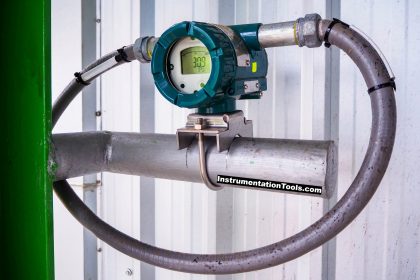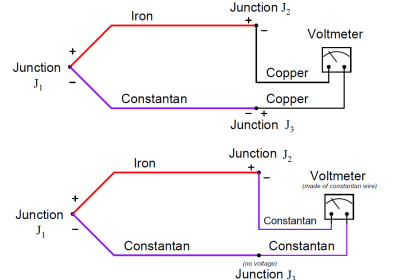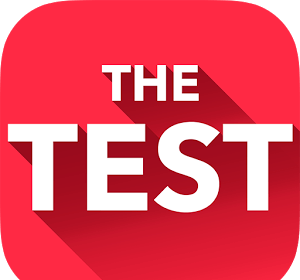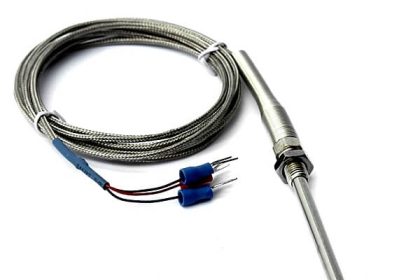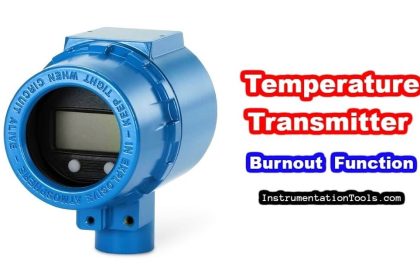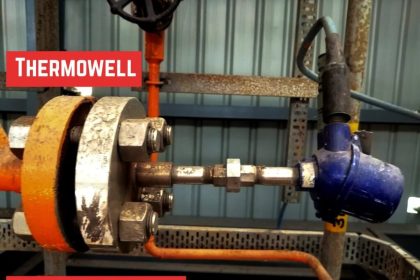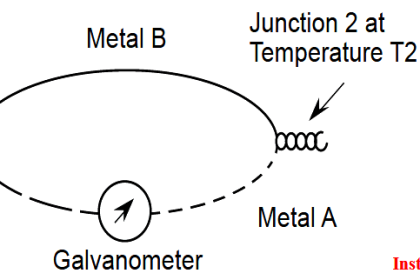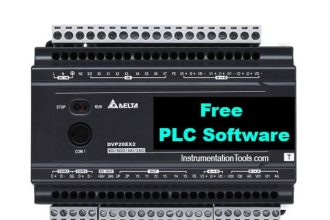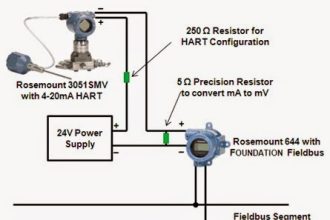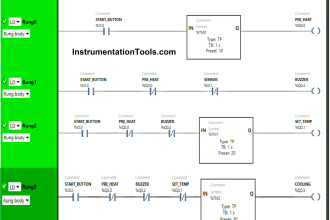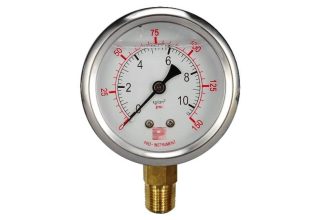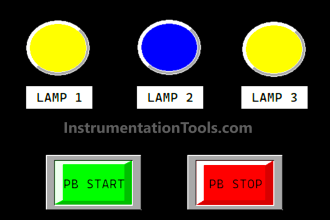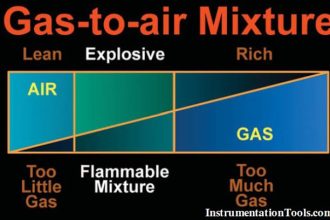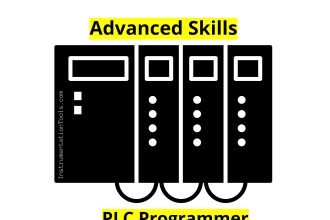Measurement of temperature is a very essential factor in all aspects of our daily life, though we know that temperature is the hotness or coldness of a body or a substance.
There are various types of temperature measuring devices used RTD, thermocouples, mercury-filled Thermometers, and probe thermometers.
In this post, we will learn what is a probe thermometer. How to use and calibrate it.
What is a Probe Thermometer?
A probe thermometer is a type of thermometer with a point-shaped metallic stem that can be inserted into process equipment or any system where the temperature is required to measure through it.
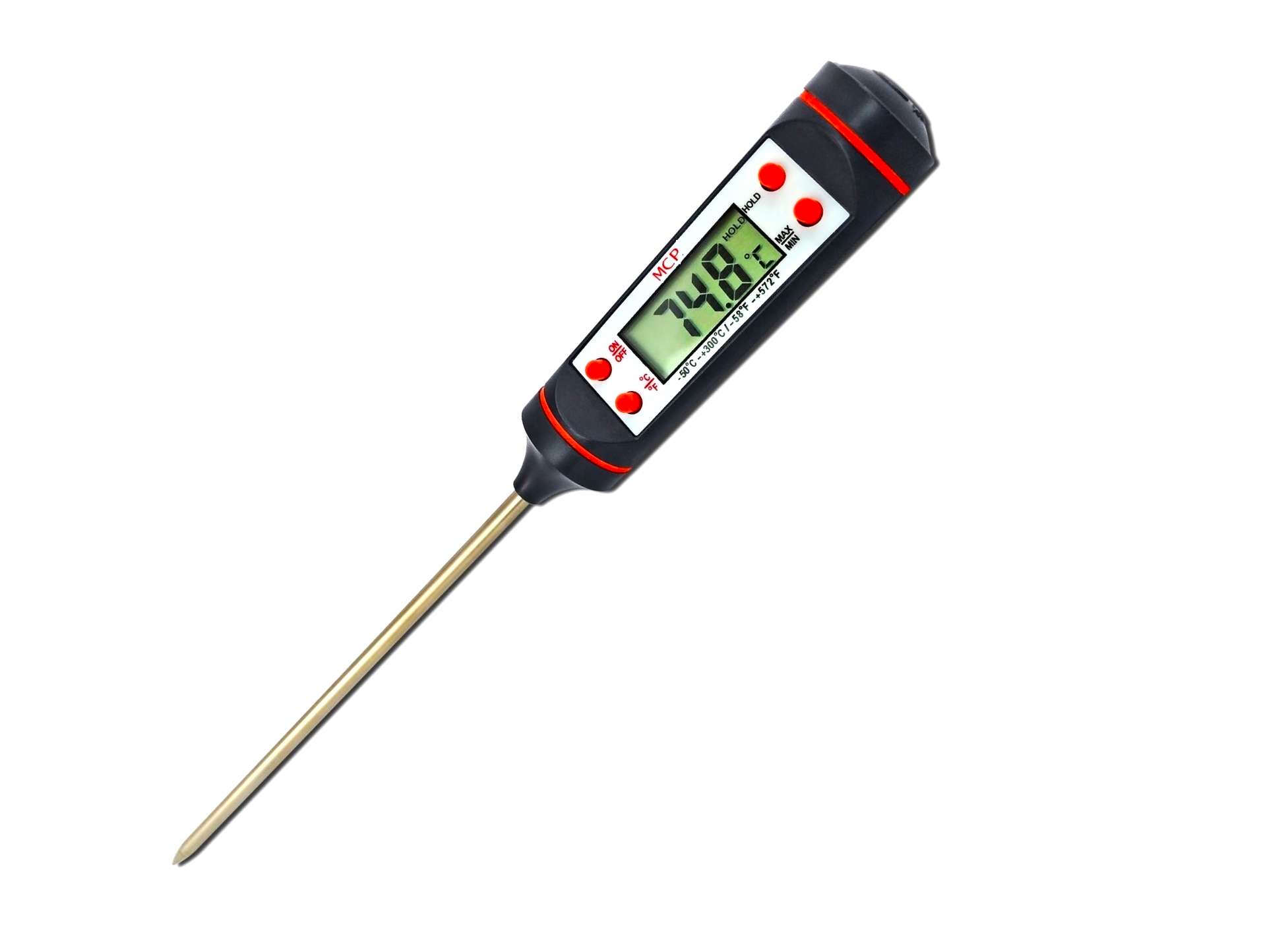
A probe thermometer is also known as a penetration thermometer or bi-couple thermometer.
Probe Thermometer is a battery-operated device usually for quick temperature checks.
Generally, Probe thermometers are commonly used in various sectors such as the food processing industry, agriculture, breweries, & industrial laboratories.
The temperature measurement range of the probe thermometer varies from -21 to 1350°C.
How to Calibrate a Probe Thermometer?
- Thermometers are one of the most important tools to measure the temperature of a product.
- Thermometers are required to calibrate properly as per manufacturer guidelines to verify the accuracy of the reading.
- Calibrating a probe thermometer is a verification of the thermometer for proper functioning.
- Calibration also includes making appropriate manual adjustments if not adjusted properly.
- The calibration technique & calibration frequency depends on the thermometer type, model, & the way it is used.
- Generally, each probe thermometer must be calibrated properly during initiation or at the start of measurement.
Types of Probe Thermometer Calibration
Calibration of probe thermometer is classified into two types
- Hot Calibration
- Cold Calibration
Hot Calibration Method of Probe Thermometer
The calibration of the probe thermometer using the Hot Calibration method is shown below.
- Heat the water near to boiling point to ensure water temperature using a standard sensor & note it down for reference.
- Pour this boiled water into a suitable vessel such as a mug or beaker or small metallic bucket.
- Insert the probe thermometer to be calibrated to the container.
- Investigate the temperature must range between 99 Degrees Celsius to 101 Degrees Celsius.
- Compare the indicated value with the noted reference value.
- If the sensed value is not correct, make an adjustment to the correct temperature value within the water.
- If the probe thermometer manual adjustment is not working, conduct a professional re-calibration.
- If not replace the instrument.
Cold Calibration Method of Probe Thermometer
The calibration of the probe thermometer using the Cold Calibration method is shown below.
- Mix crushed ice pieces and cold water in a mug or beaker or small metallic bucket in equal proportions.
- Stir the water and ice mixture well and wait for some time for heat distribution between water and ice about 3 to 5 minutes.
- Insert the probe thermometer to be calibrated to the container without contacting the sides of the thermometer.
- Investigate the temperature must range between -1 Degrees Celsius to 1 Degrees Celsius.
- If the sensed value is not correct, make an adjustment to correct the temperature value within the water.
- If the probe thermometer manual adjustment is not working, conduct a professional re-calibration.
- If not replace the instrument.
The Thumb Rule for using Probe Thermometers
- Always clean, sanitize, & dry the probe thermometer before using.
- Consider the type of probe thermometer for the appropriate food type may be liquid or solid.
- Fix the probe thermometer into the coolest part of the product where we need to measure the temperature.
- Stir well before noting down temperature reading in the case of liquid products.
- During measurement do not contact the container surface.
- Don’t consider the temperature of the product only in one place for the product does not have a uniform shape.
How to Use a Probe Thermometer?
- To ensure food safety an accurate measurement of temperature from processing units, restaurants, & cafes are very essential.
- There are various types of thermometers available for commercial purposes, among these types, a probe thermometer is the most commonly used thermometer.
- A probe thermometer detects the internal temperature of food through its point-shaped metallic stem.
What are the Steps employed in using a Probe Thermometer?
Considering the probe thermometer is well calibrated for the proper use and to ensure reading accuracy.
Here are six steps to require following when using a probe thermometer.
Step 1: Check the type of Probe Thermometer.
- There are various types of probe thermometers available in the market.
- Some thermometers are used to measure the temperature at the tip of the probe, while others need to be inserted about 2 to 3 cm into the food.
- Always ensure the thermometer type that we are using before sensing the temperature of food.
Step 2: Clean & Sanitize the Probe Thermometer
- Clean, sanitize and dry the probe thermometer before use.
- A properly disinfected thermometer is essential to avoid the spreading of germs or allergens from one food product being tested to another food product.
Step 3: Insert the Probe Thermometer
- Insert the thermometer into the food item for what we need to measure the temperature.
- Ensure that the probe is inserted at cold & soft regions & avoid inserting the probe at a hard point.
- Be careful during measurement such that the surface of the container must not be contacted without any hand gloves.
- Wait for about 30 to 40 seconds to settle the temperature.
Step 4: Check the Temperature
- Ensure that the food ready to consume has reached the required temperature.
- Generally, all food must be cooked at 74 Degrees Celsius.
- But make sure that we must know the required temperature for the food we are checking.
- Check local authorities on specific temperatures, as these may vary between provinces and territories.
Step 5: Record the Temperature measured
- As part of the Food Safety policy, we need to record the temperature of certain high-risk foods or perform spot checks.
- Ensure you furnish the required documentation as per the policies and procedures of your food authority.
Step 6: Clean & Sanitize Again
- After using the probe in measuring temperature, clean and sanitize the probe once again.
- Allow the thermometer to dry and store it in a cool place.
If you liked this article, then please subscribe to our YouTube Channel for Instrumentation, Electrical, PLC, and SCADA video tutorials.
You can also follow us on Facebook and Twitter to receive daily updates.
Read Next:
- Skin Type Thermocouple
- Response Time Test of RTD
- Transmitter Burnout Function
- Thermowell Outer Diameter
- Temperature Chamber Calibration
